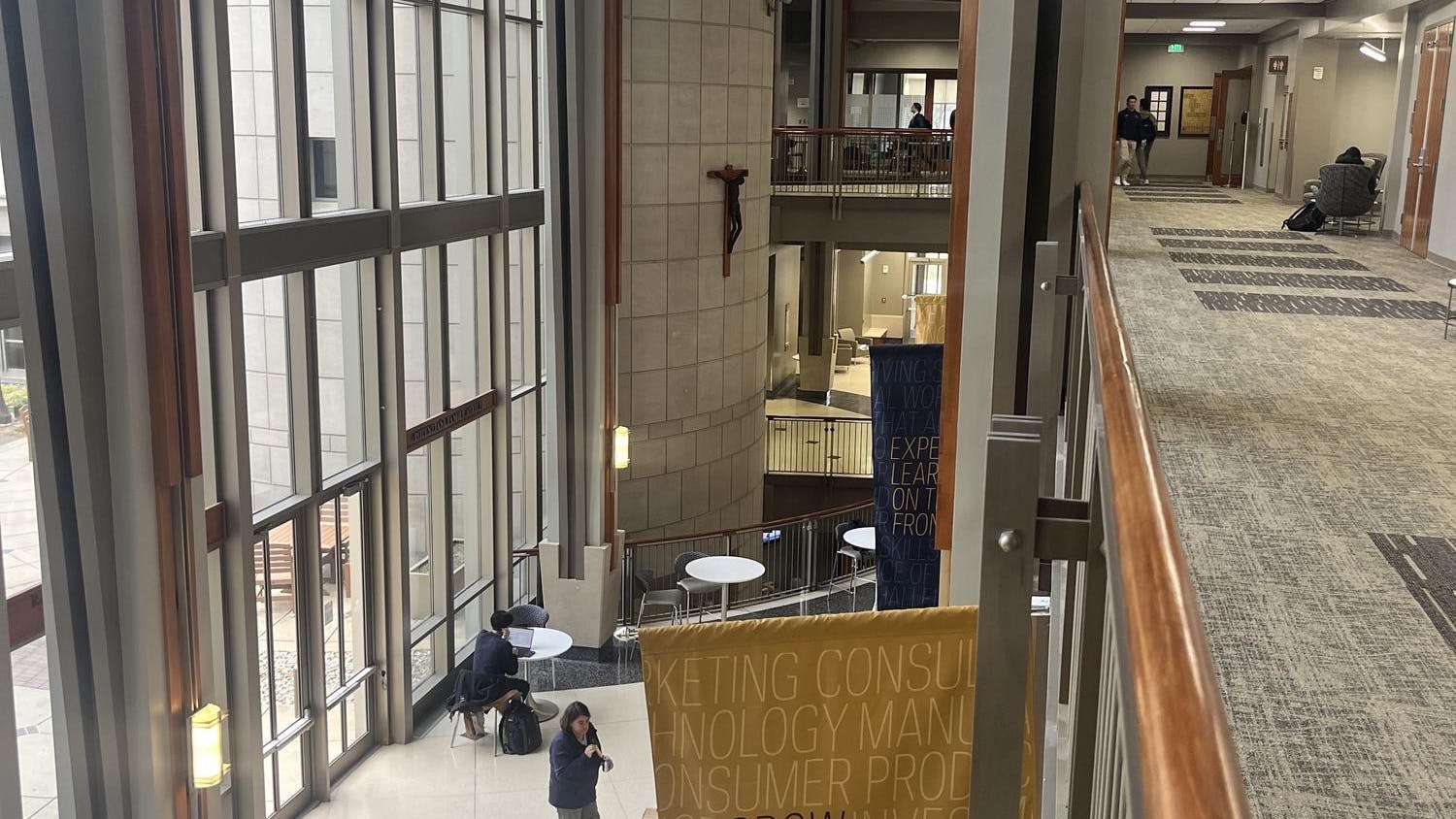For the third year in a row, the Saint Mary’s sustainable farm will be offering fresh produce to the community throughout the fall semester.
Director of the sustainable farm Christopher Cobb said that the idea for creating the farm arose after Pope Francis released the environmental encyclical, “Laudato Si’.”
“We began having conversations about things that the College could do to be more sustainable ... and the idea arose that we might start a sustainable farm. Step by step, we put the farm into place,” Cobb said.
Matthew Insley, farm manager, expanded on the sustainability mission of the farm, saying “the practices that we use are things that we can continue to use over time without depleting the resources, but actually adding to it.”
This year marks the farm’s third growing season, but its first full-scale harvest.
Abbie Kawalec, a junior and care for creation coordinator, says that a large part of the growth is thanks to Insley, who students often refer to as Farmer Matt.
“What has gone into that [growth] is a lot of dedication from Farmer Matt, who started working last year. He has completely revolutionized the farm,” Kawalec said.
Kawalec also helps coordinate volunteer work on the farm, located just past the soccer field at the College.
“I’d say the way we were really able to change was getting passionate volunteers,” she added.
The work continues nearly every season — harvesting in the fall, preparing for winter and planting and seeding in the spring.
Students work and the farm and at the sustainable farm market, a donation-based market that sets up on the Saint Mary’s campus every Friday.
“The food is there for those who come to take what they need, what they’re looking for,” Cobb said. “Then if people want to make a donation to support the farm’s work, they can. And we’ve been getting a lot of generous donations each week.”
Before the market at the College, the harvest becomes part of a food pantry that Carrie Badertscher, ecumenical chaplain at Saint Mary’s, operates out of her home. Families and those in need can select their fresh produce for no cost.
“We are seeking to ensure that the first thing that food from the farm does is go to people who need it,” Cobb said. “And then the College is the second destination for the food because we want to give back to the community that’s supporting us.”
At the market, students can find a wide variety of crops that have all been grown at the farm. Right now, summer squash, peppers, eggplant, tomatoes, cucumbers, lettuce mix, kale, collard greens, garlic, green beans and more are in season, Cobb said. The farm also offers fresh herbs, flowers and eggs.
Insley referred to the chickens as “our best ambassadors and key to engagement on campus.”
The chickens are part of the sustainable farm and the Food Waste Fighters, another part of the Center for Faith, Action and Mission. Kawalec said that the Food Waste Fighters collect food waste from the dining hall to feed the chickens, and the chickens feed on grass from the farm to clear the land.
“[The chickens are] a perfect example of the way that regenerative farming can change the world,” Insley said. “They’re recycling machines in action.”
The chickens ‘recycle’ by eating the food waste that is collected in the dining hall.
“We take basically all your food waste,” Insley said. “We don’t want your plastic — the chickens don’t eat plastic — but they eat just about everything else. You can even put your napkins in.”
Insley said that this is a great way for students to help out that doesn’t involve any effort.
“Use the green bins. If it’s on your plate at the end, put it in the bins. The chickens pick it clean and honestly it’s been saving us thirteen dollars a day, that’s really awesome,” he said.
Beyond the crops and chickens, the farm is also being used to grow flowers and a dye garden, a collaboration with the art department to create natural pigments. Several leaves, roots and seeds are used for the sustainable textiles class.
Cobb predicts students and community members will continue to see the farm and market in action throughout the semester. Harvest will continue through the end of October, and farm leaders hope to plant late fall crops in future years.
SMC sustainable farm produces first full scale harvest
Saint Mary's utilizes land to grow a variety of crops for the community.
Saint Mary’s grows a variety of crops for the South Bend and Saint Mary's community.









